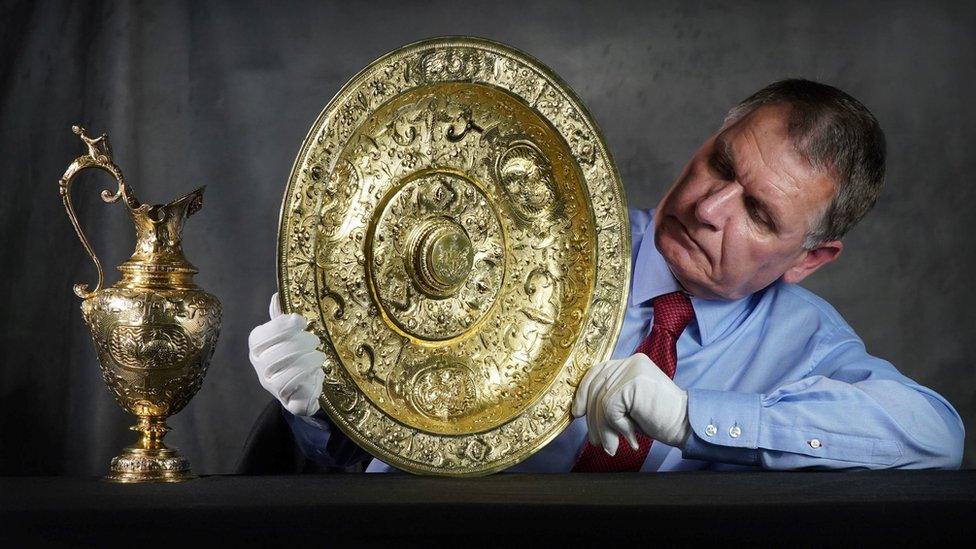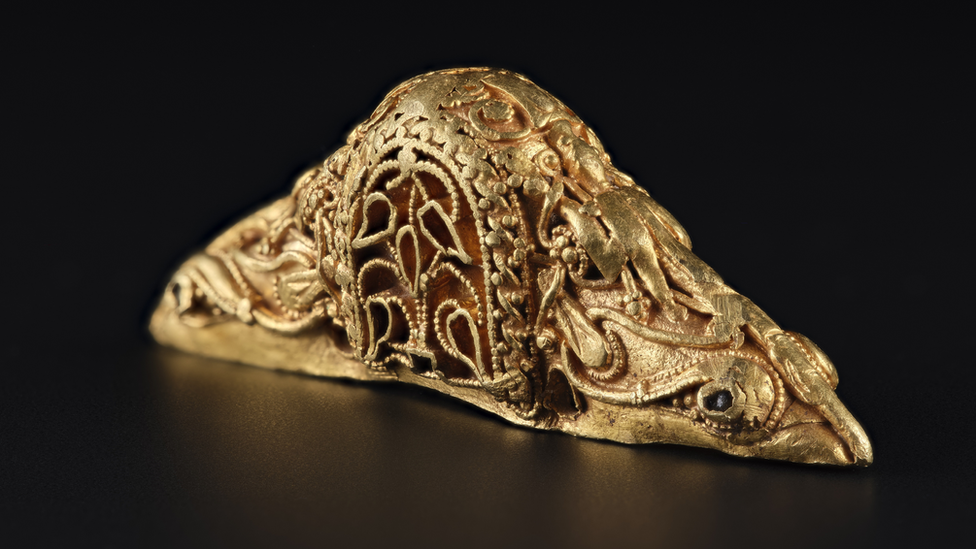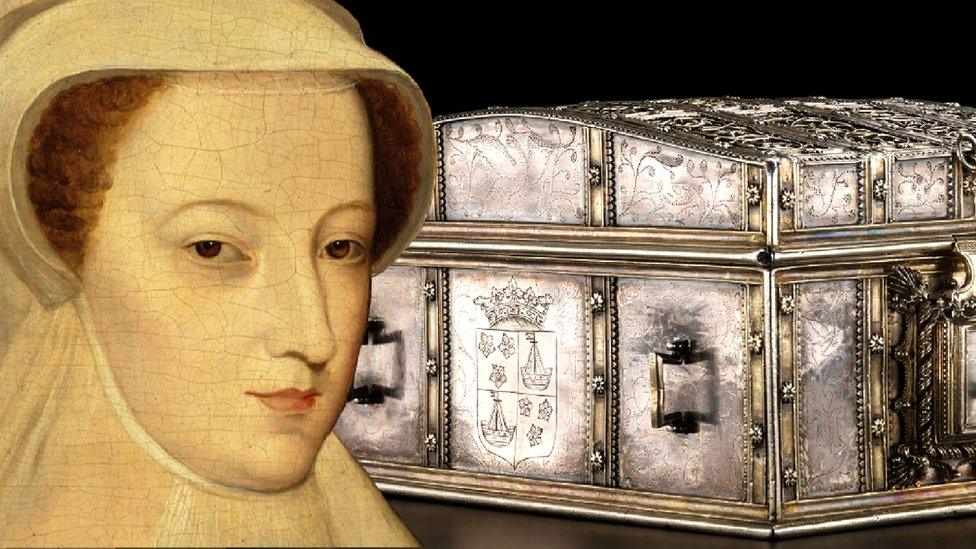Renaissance era gilded silverware acquired by Scottish museum
- Published

Dr Godfrey Evans said the items were a welcome addition to the museum's collection
An extremely rare silver-gilded ewer and basin from the 16th Century are to go on display in Edinburgh.
The Panmure ewer and basin, which are about 437 years old, will go on permanent display from Wednesday at the National Museum of Scotland.
Ewers and basins were used by royalty and aristocrats at the time to ceremonially wash their hands at meals - but most were later melted down.
This set was acquired by the nation under the Acceptance in Lieu scheme.
Under the scheme, people can give objects of historical, cultural or scientific importance to the government instead of paying inheritance tax when someone dies.
The golden-wrapped silverware came from the collection of the Earls of Balhousie and was allocated to National Museums Scotland.
In 1967, the Panmure ewer and basin were exhibited in Treasures from Scottish Houses: European Decorative Arts, in what was then the Royal Scottish Museum.
It was acquired by Scottish Whig politician William Ramsay Maule, first Baron Panmure (1771-1852) the second son of the 8th Earl of Dalhousie and father of the 11th Earl of Dalhousie.
Research will be carried out to try to discover more about the items' maker and how they were acquired.
Wealth and status
The silverware was created in London in 1586 or 1587 by the goldsmith HC - who the museums believe was the Dutch immigrant goldsmith Harman Copleman.
It is believed Elizabeth I had at least 40 sets of silver or silver-gilded ewers and basins in 1574, but today fewer than a dozen sets made in London before 1600 survive.
The ritual of washing hands with scented rosewater at a banquet was widely practised by social elites in the 16th Century.
And the Panmure ewer and basin would have been used in that fashion as well as being displayed to impress people with the owner's wealth and status.
Dr Godfrey Evans, principal curator of European decorative arts at National Museums Scotland, said the items were a welcome addition to the museum's collection.
"Their craftsmanship is particularly fine and the representations of lots of scaly dolphins, flying fish, snails and other weird and wonderful animals offer us a glimpse into a period when such objects demonstrated the wealth, power and sophistication of the elite," he said.
"I'm really pleased National Museums Scotland is now in possession of these beautiful Renaissance pieces for the public to enjoy."
- Published24 October 2022

- Published19 May 2022
